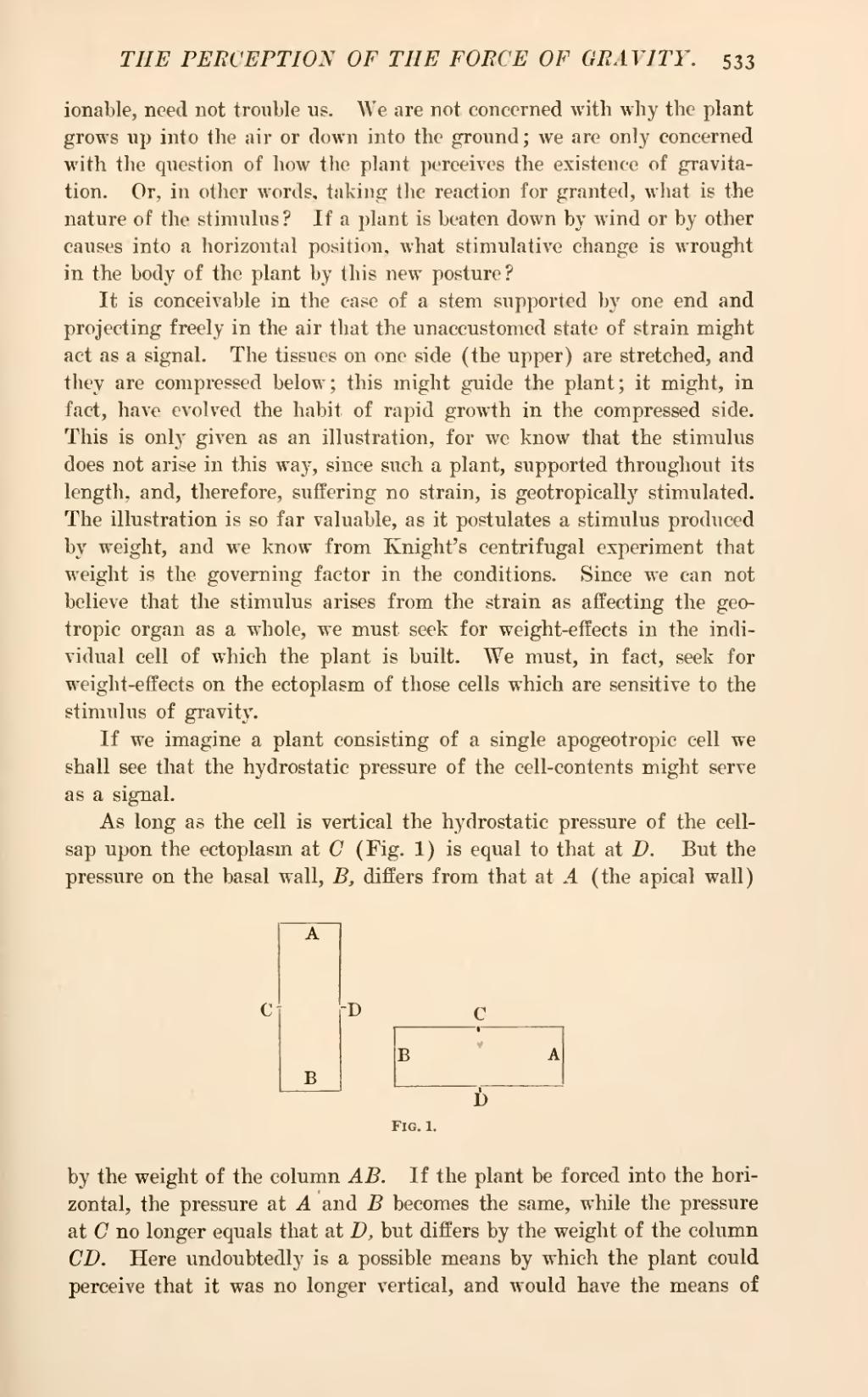ionable, need not trouble us. We are not concerned with why the plant grows up into the air or down into the ground; we are only concerned with the question of how the plant perceives the existence of gravitation. Or, in other words, taking the reaction for granted, what is the nature of the stimulus? If a plant is beaten down by wind or by other causes into a horizontal position, what stimulative change is wrought in the body of the plant by this new posture?
It is conceivable in the case of a stem supported by one end and projecting freely in the air that the unaccustomed state of strain might act as a signal. The tissues on one side (the upper) are stretched, and they are compressed below; this might guide the plant; it might, in fact, have evolved the habit of rapid growth in the compressed side. This is only given as an illustration, for we know that the stimulus does not arise in this way, since such a plant, supported throughout its length, and, therefore, suffering no strain, is geotropically stimulated. The illustration is so far valuable, as it postulates a stimulus produced by weight, and we know from Knight's centrifugal experiment that weight is the governing factor in the conditions. Since we can not believe that the stimulus arises from the strain as affecting the geotropic organ as a whole, we must seek for weight-effects in the individual cell of which the plant is built. We must, in fact, seek for weight-effects on the ectoplasm of those cells which are sensitive to the stimulus of gravity.
If we imagine a plant consisting of a single apogeotropic cell we shall see that the hydrostatic pressure of the cell-contents might serve as a signal.
As long as the cell is vertical the hydrostatic pressure of the cell-sap upon the ectoplasm at C (Fig. 1) is equal to that at D. But the pressure on the basal wall, B, differs from that at A (the apical wall)
by the weight of the column AB. If the plant be forced into the horizontal, the pressure at A and B becomes the same, while the pressure at C no longer equals that at D, but differs by the weight of the column CD. Here undoubtedly is a possible means by which the plant could perceive that it was no longer vertical, and would have the means of

